

Growth Mindset Teacher Inquiry. Our Teacher Inquiry This year at our school we are using the Spiral of Inquiry (Timperley et al, 2014) to structure our teacher inquiry.
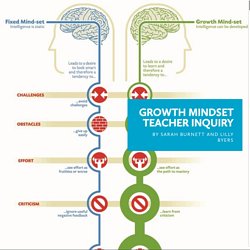
As a staff we broke in to our teams and read about the different sections; Scanning, Focussing, Developing a Hunch, New Learning, Taking Action and Checking. We summarised the key points of each section and shared back the key understandings. From this, teachers were asked what their ‘hunch’ was and we decided to focus on growth mindset. Waikirikiri School – Inquiry, appraisal and student learning.
CORE Education's Ten Trends 2014. Locating Yourself - A Key to Conscious Leadership. 7 Qualities That Promote Teacher Leadership in Schools. There’s a growing consensus among students, parents, teachers and education leaders that the current education system isn’t appropriately preparing young people for the future.
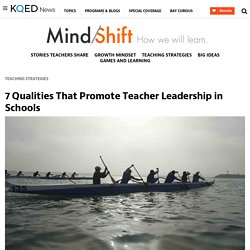
Many districts are looking toward technology to patch the disconnect, but several recent reports indicate that technology alone cannot fix the ailing system. High-quality teachers are essential to learning environments that consider each student as a unique, individual learner, but very few schools have good systems in place to support teachers learning together and sharing their expertise. Given the need for change felt by many involved in education, there may be a unique opening right now to invest in teacher leadership as a way forward. Founder and CEO of the Center for Teaching Quality, Barnett Berry, recently published a report summarizing 30 years of research on best practices to empower teachers to lead and improve practice. New types of assessment are gaining ground. 10 Things Great Leaders Do. Paul Charman: Beware the charismatic ning-nong - Opinion. Watch out for those ‘superb’ job candidates who turn out to be an employer’s, or workmate’s worst nightmare I dread the plausible narcissists, the dangerous con artists who infiltrate our world from time to time, leaving tears in their wake.
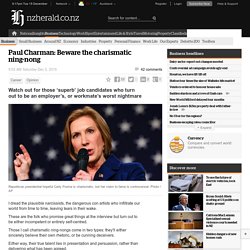
These are the folk who promise great things at the interview but turn out to be either incompetent or entirely self-centred. Those I call charismatic ning-nongs come in two types: they'll either sincerely believe their own rhetoric, or be cunning deceivers. Either way, their true talent lies in presentation and persuasion, rather than delivering what has been agreed. Their arrival will spell misery for those who hire, work alongside or in any way depend upon them. These are the job candidates with the gift of the gab, who appear to network superbly and demonstrate the right connections, but lack any real ability. The Top 50 Best Books for Teachers. Hynessight: eportfolios - why, how and what? Five reasons your school’s NOT transforming. So, maybe you’re on Twitter, your colleagues are on Twitter, you’re excited about ideas around new learning and your Principal might mention these themes in staff meetings.
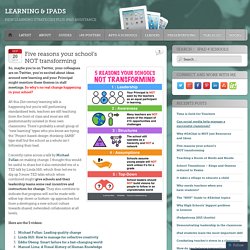
So why’s no real change happening in your school? All this 21st century learning talk is happening but you’re still performing standardised tests, teachers are still teaching from the front of class and most are still predominantly isolated in their own classrooms. Five reasons your school’s NOT transforming. Education Keynote Speaker, MC, Professional Development. How to make the most of 30% feedback. Giving feedback is only part of the feedback process.

We spend a great deal of time talking about how to provide, offer and give feedback but little on how to receive it. This post is about a strategy called ‘30% feedback’ that will help you, or your students, receive feedback more successfully. “It takes two to tango” as the song goes and the dynamic of feedback is based on a relationship between two (or more) people. Providing feedback is one role, receiving the feedback the other and we can develop strategies to receive feedback as well as those related to offering it. 30% feedback is a strategy for the receiver of feedback.
Five reasons your school’s NOT transforming. Education Keynote Speaker, MC, Professional Development. B. Mihi - Introductions — Maori ki Otago - Maori at Otago. Home » Te Ao Māori » Te Reo - Language » b.
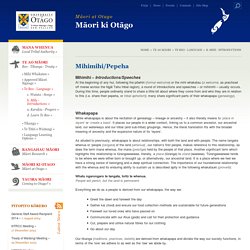
Mihi - Introductions Mihimihi – Introductions/Speeches At the beginning of any hui, following the pōwhiri (formal welcome) or the mihi whakatau (a welcome, as practised off marae across the Ngāi Tahu tribal region), a round of introductions and speeches – or mihimihi – usually occurs. Moral purpose and shared leadership / Manaakitanga: Leading with moral purpose / Leading change. By Michael Bezzina Overview This piece reports on the outcomes of a pilot study known as Leaders Transforming Learning and Learners (LTLL).
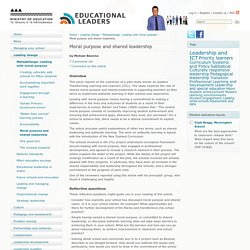
The study explores the role of shared moral purpose and shared leadership in supporting teachers as they strive to implement authentic learning in their schools and classrooms. Future schools and innovation / Leading change. Effective school leaders consciously support innovation and keep a focus on education’s ever-changing landscape as it moves into the future.
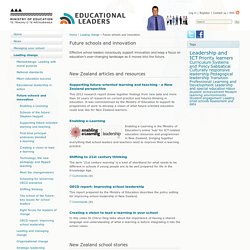
New Zealand articles and resources Supporting future-oriented learning and teaching - a New Zealand perspective This 2012 research report draws together findings from new data and more than 10 years of research on current practice and futures-thinking in education. It was commissioned by the Ministry of Education to support its programme of work to develop a vision of what future-oriented education could look like for New Zealand learners.
Leadership qualities. You are here: "Four educational leadership qualities underpin principals’ ability to lead their schools: manaakitanga (leading with moral purpose), pono (having self-belief), ako (being a learner), and awhinatanga (guiding and supporting).
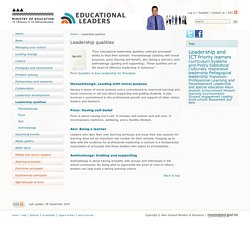
Being a leader. Four Seasons In One Kiwi: Building Capital to Build Capacity. I belong to a PPLG (principal’s’ professional leadership group) and we have been reading ‘The Principal – Three keys to Maximizing Impact” by Michael Fullan.

At our meeting last week, we focused on chapter three, The First Key – Leading Learning. It is a fairly substantial chapter, and it covers a wide range of things an effective educational leader does. All of which are very useful and powerful considerations we can use to improve the day to day impact our leadership has on our schools. One concept I am particularly interested in is the concept of capital – professional, human, social and decisional. I am really interested in what it means to build the professional capital of your team, and how the interplay of human, social and decisional capital underpins this professional capital.
It left me wondering, how well do we maximize each of the areas of capital in order to grow the success of our teams? Professional Capital Key questions for maximizing professional capital: Learning Theory v5 - What are the established learning theories? Information About What Works Best For Learning. TEACHER OBSERVATIONS DON’T WORK… BUT WHY? Teacher observations are but one of two elephants in the teacher’s lounge. The other is student grading, but we can only wrangle one elephant at a time, so let’s pick the biggest and the orneriest. I love teaching, enjoy the administrators, and in fifteen years of teaching have always received satisfactory evaluations. Four Seasons In One Kiwi: June 2015. Recently I had the privilege to visit another school with my Digital Improvement Team leader.
It gave us the opportunity to converse with other like minded educationalists, poke around in a few of their classrooms, and most importantly, see education through the lens of someone other than ourselves. It is not often we get an opportunity to escape our own reality and view another schools vision and place in the educational world. Our trip was set up and arranged by Mary (from Cyclone) after the two of us had talked all things digital and educationally innovative one day over coffee. Mary had thought we might get some useful insights from this particular school, and sensed a similar philosophy running through the two schools, and felt that we might find their story interesting. She wasn’t wrong. New behaviour tsar Tom Bennett's top ten tips for maintaining classroom discipline. These are the things that every teacher should be doing to ensure order in the classroom. They’re very basic, and open to endless interpretation, but I think that they represent a good place to start, whether it's with a new class or an old one you want to reboot. 1.
Set out your behaviour expectations from the moment you meet your students This can be done by a whole lesson of talking, something stuck in their books, a poster on the wall: anything that gets the point across that there are rules in your classroom. Four Seasons In One Kiwi: Those Dreaded Few Words...Do You Have a Minute? Imagine if you will, that you are sitting at your desk, busily beavering away at the three quadtrillion (yes that is a word) things on your 'to do' list.